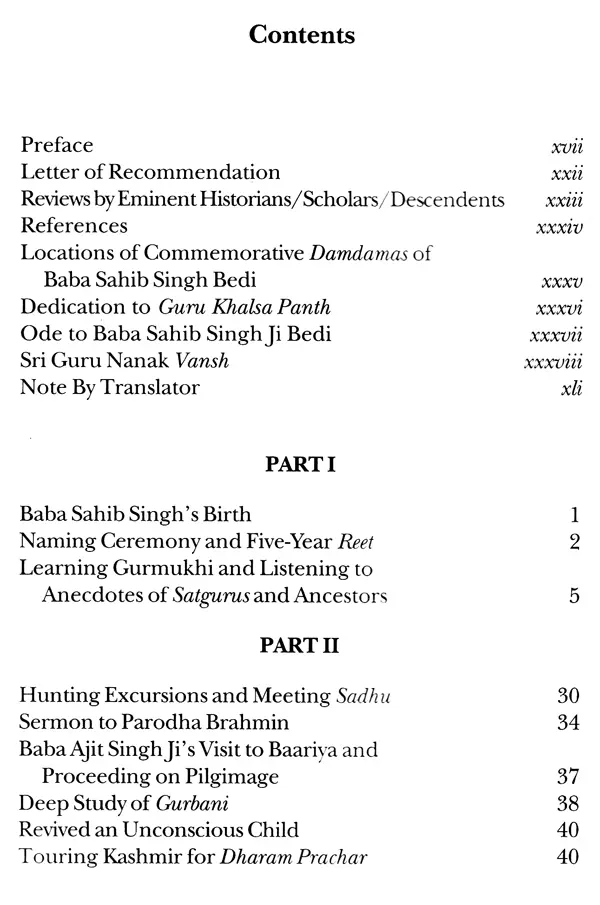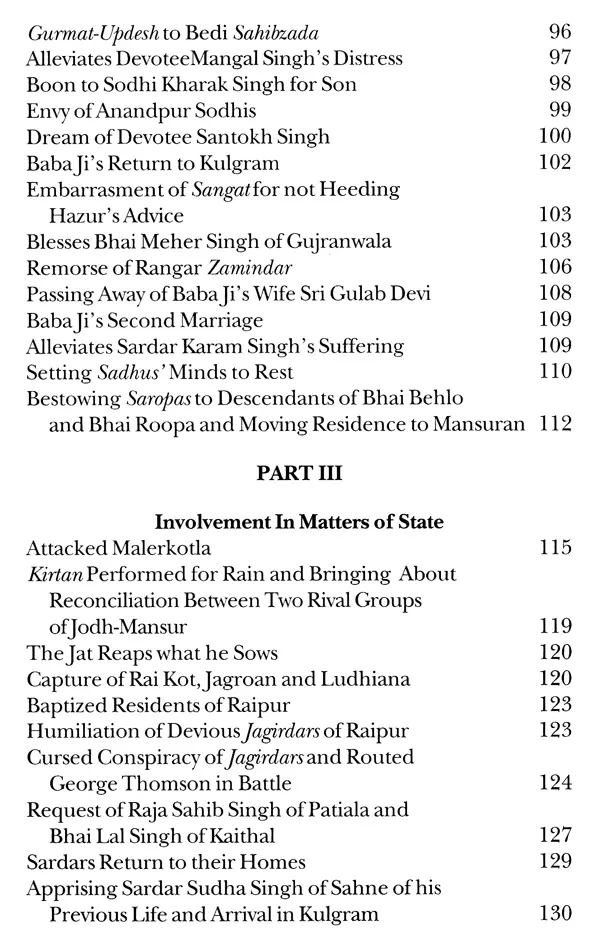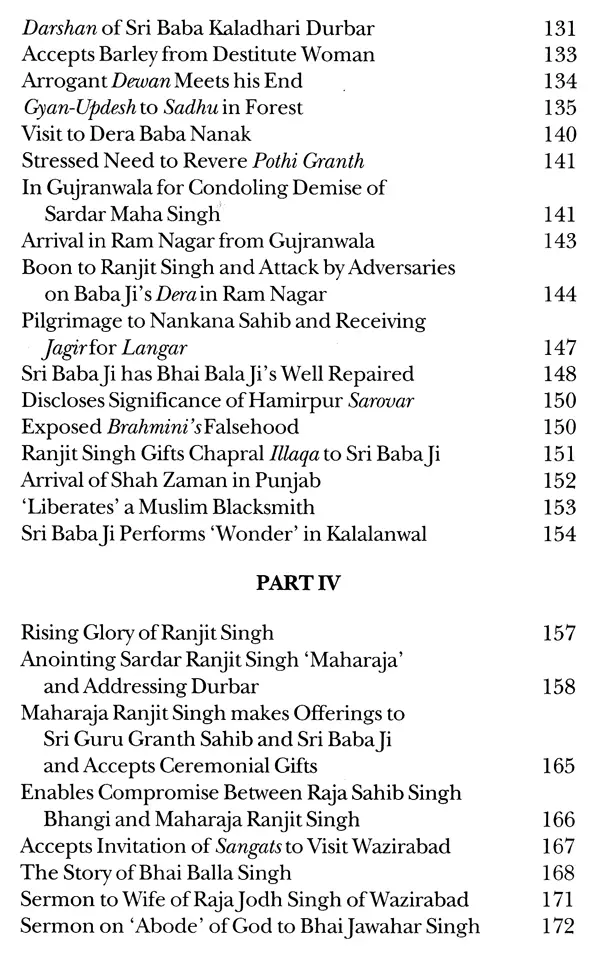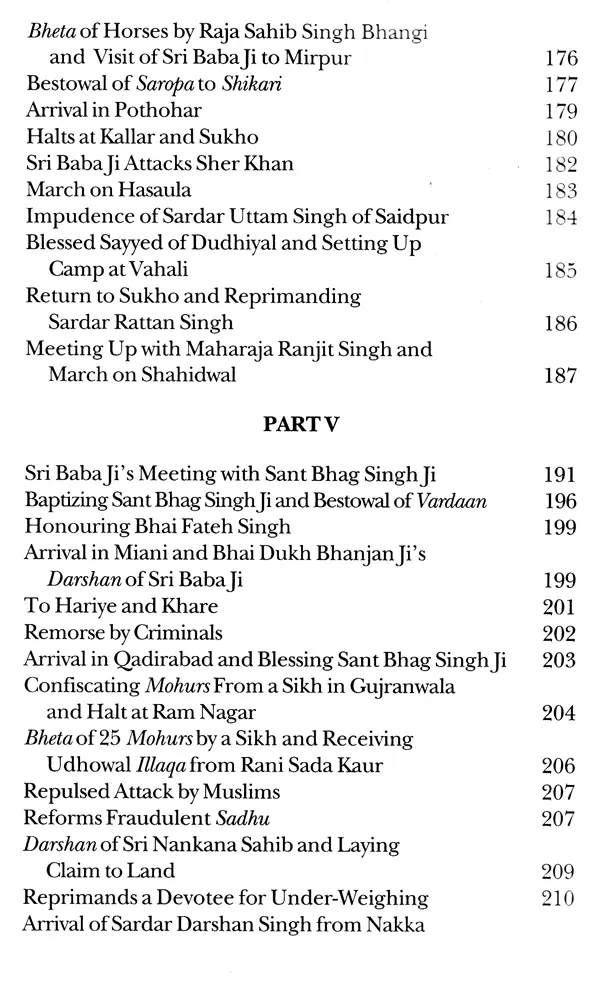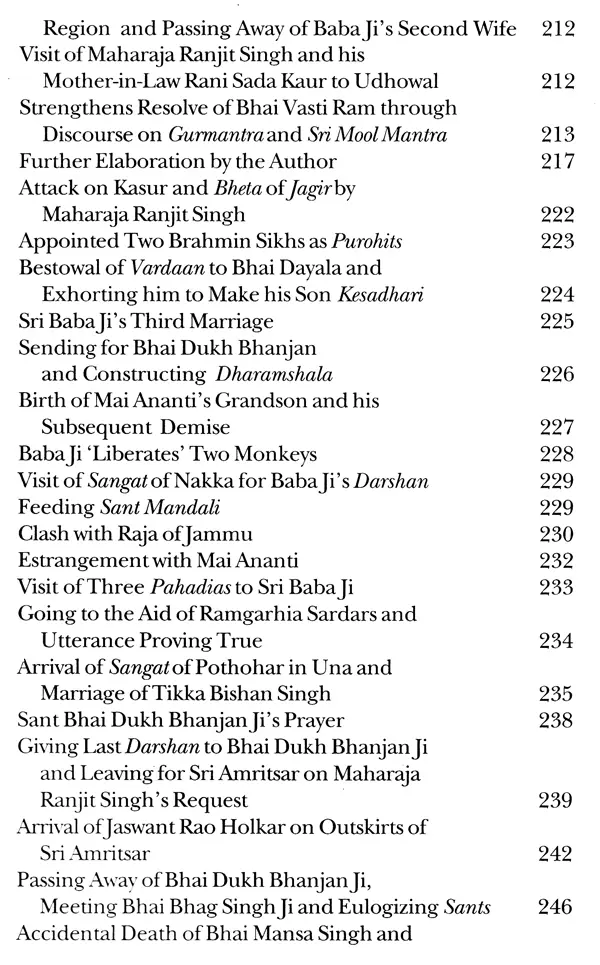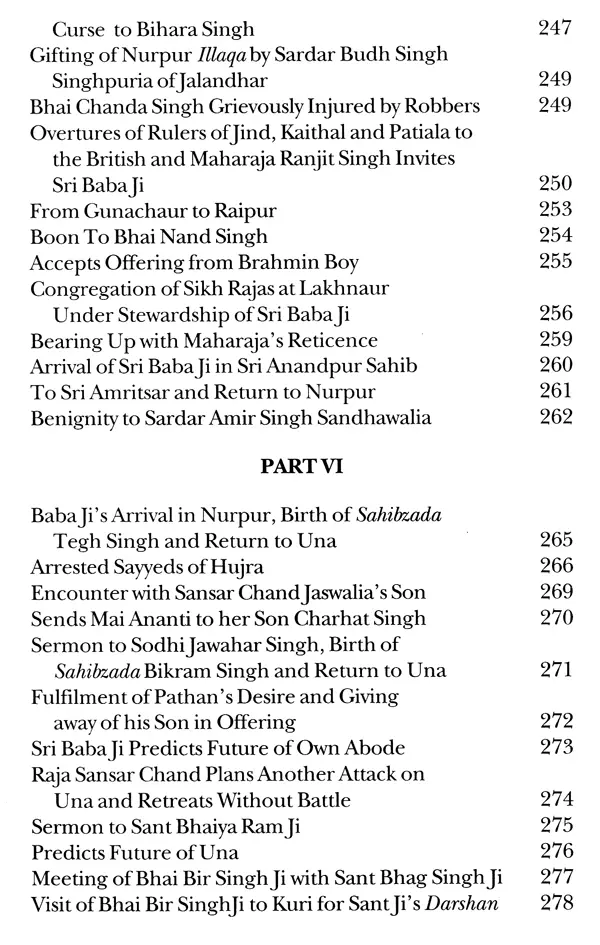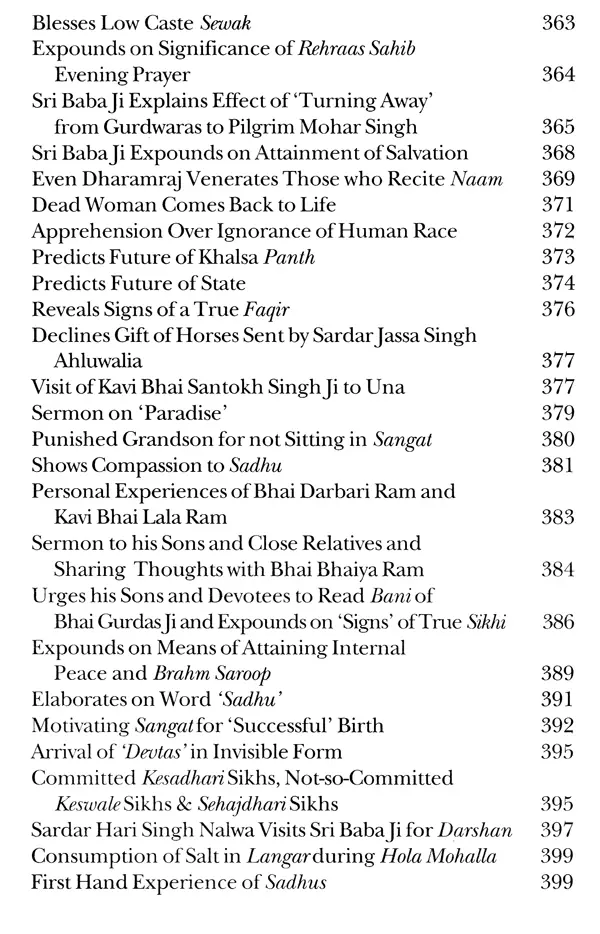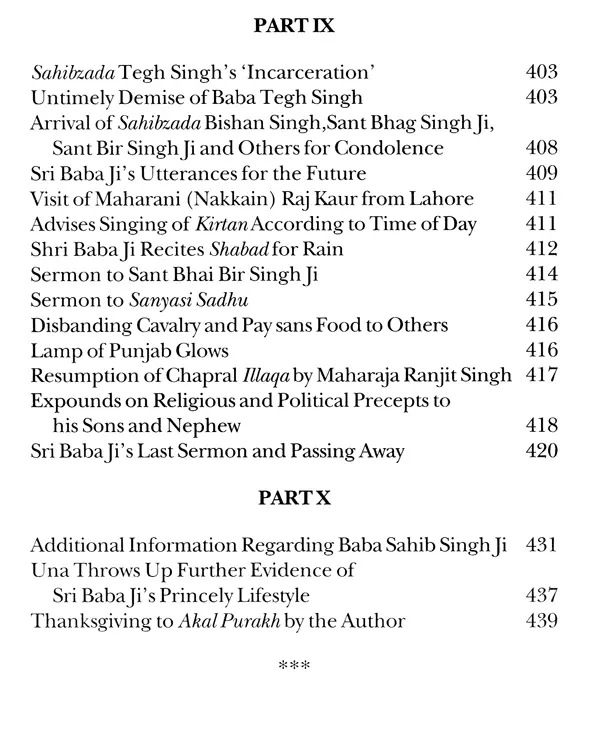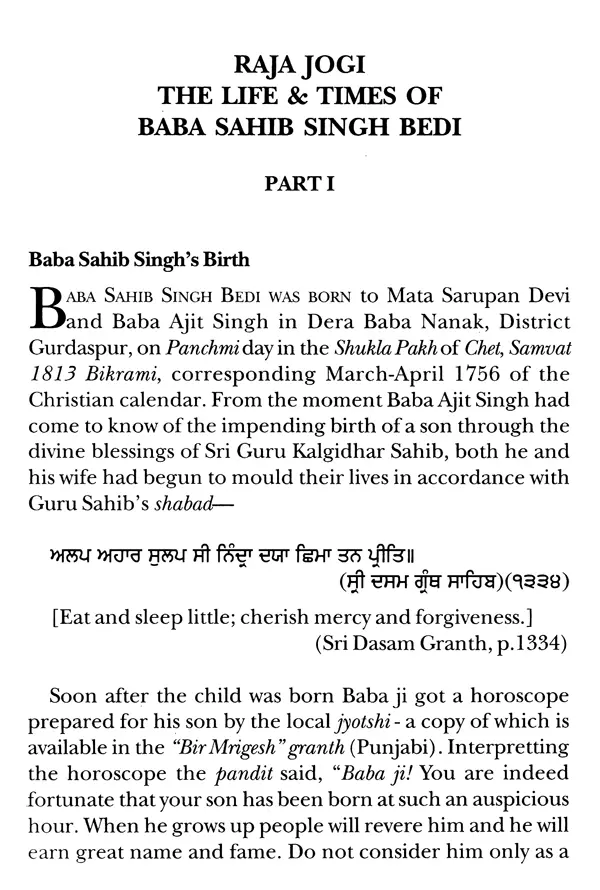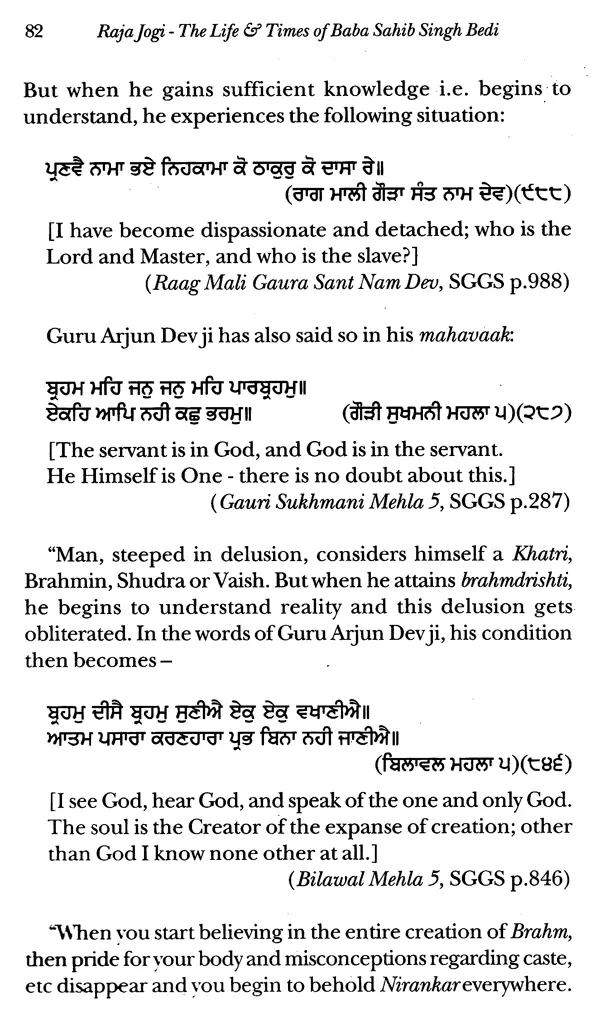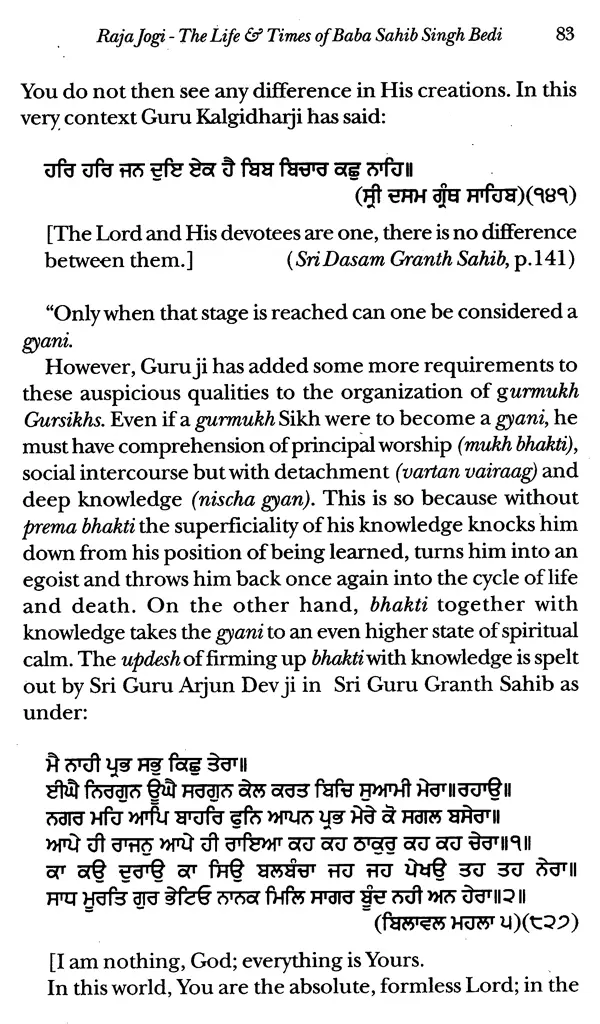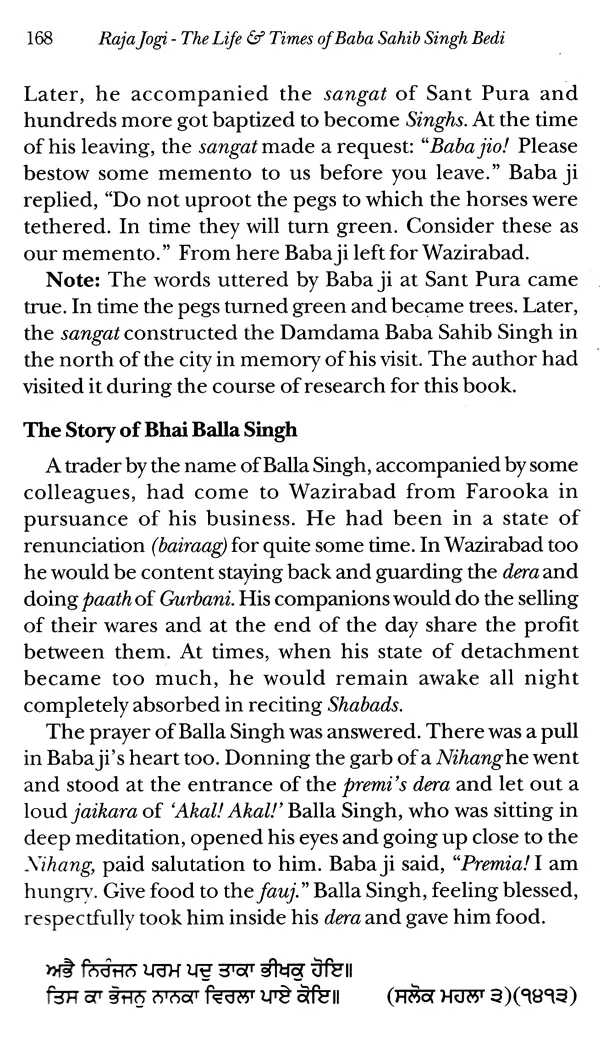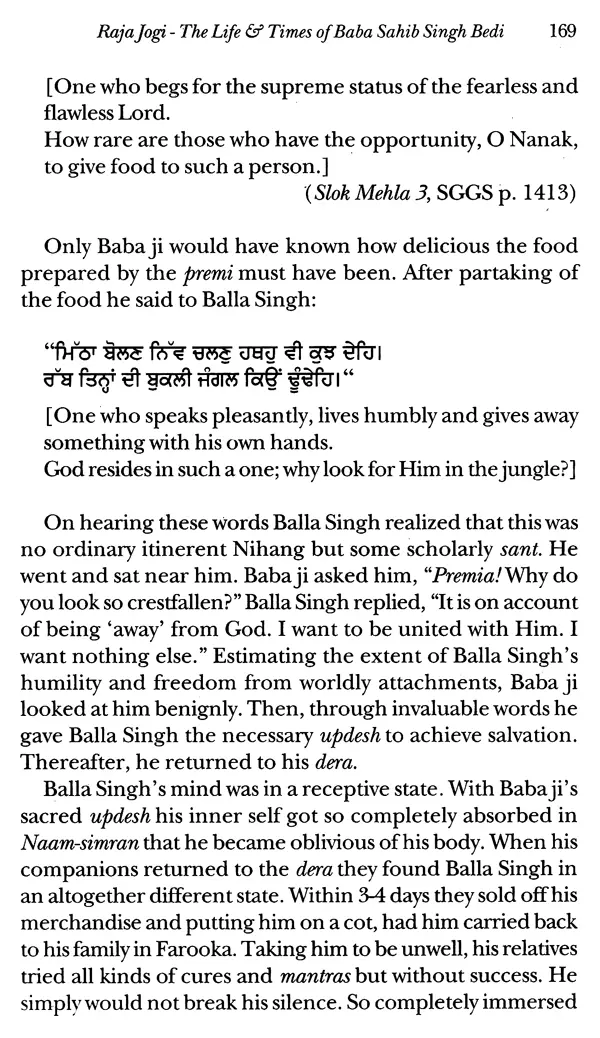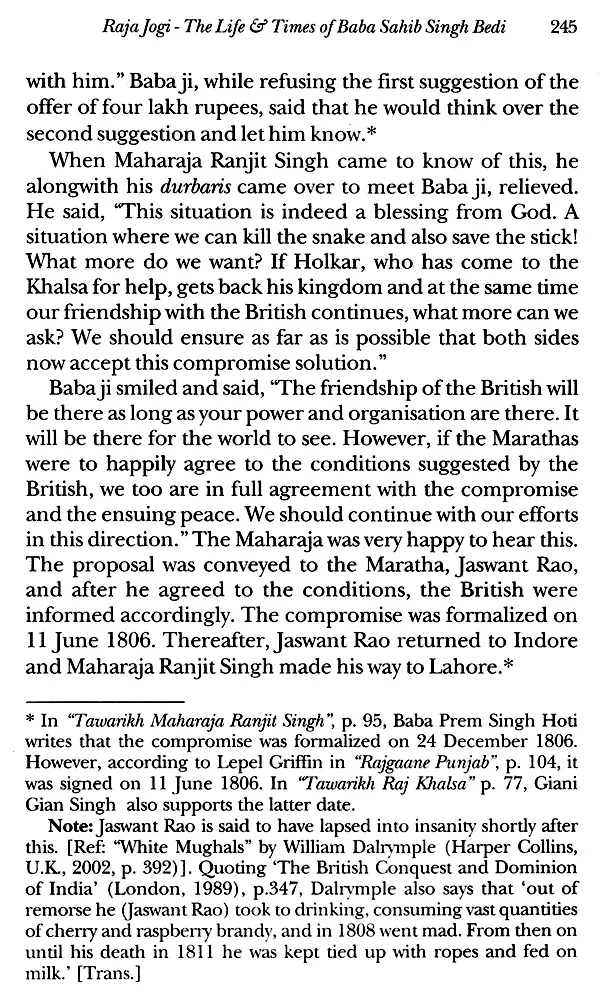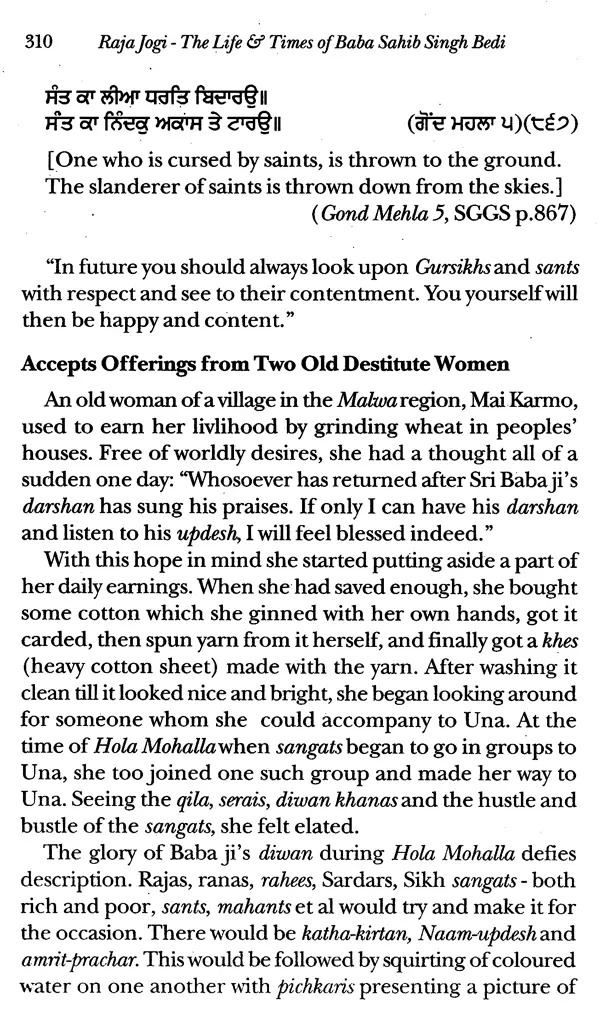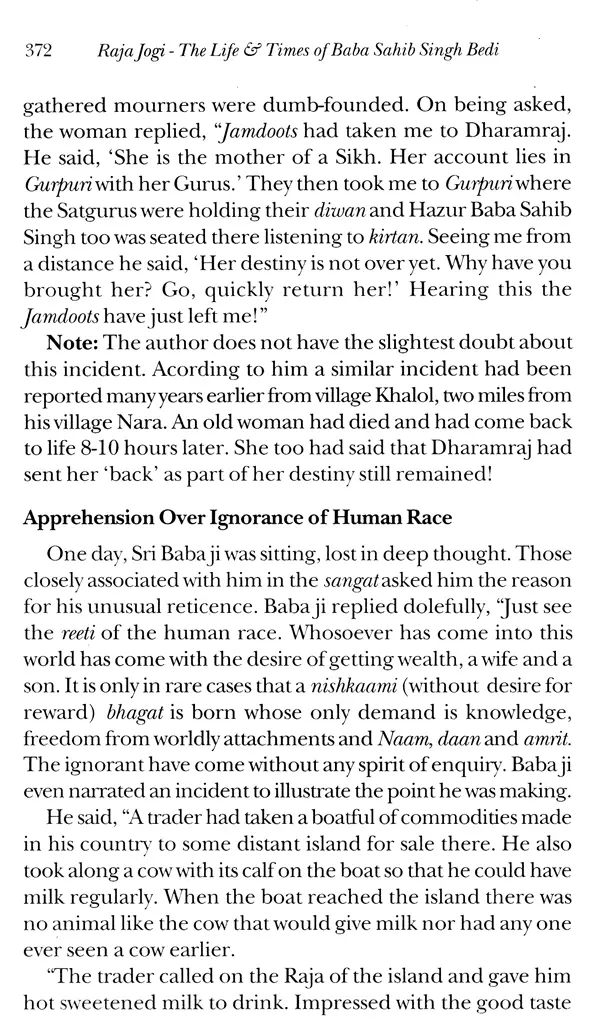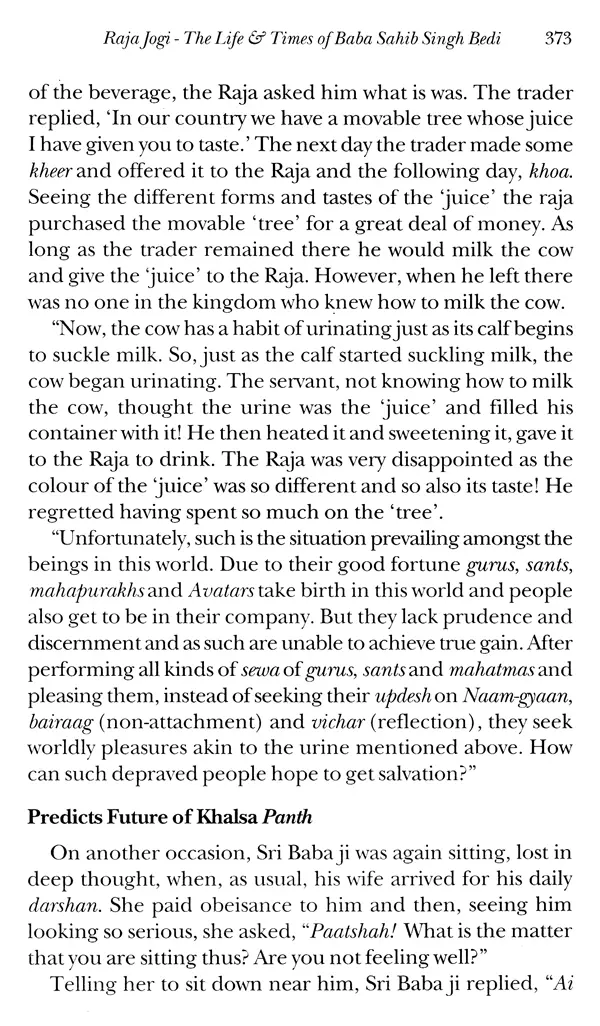
Raja Jogi- The Life & Times of Baba Sahib Singh Bedi Una (Himachal Pradesh, formerly Punjab)
Book Specification
| Item Code: | UAZ818 |
| Author: | Giani Ishar Singh Nara |
| Publisher: | MUNSHIRAM MANOHARLAL PUBLISHERS PVT LTD |
| Language: | English and Punjabi |
| Edition: | 2022 |
| ISBN: | 9788121513630 |
| Pages: | 486 |
| Cover: | HARDCOVER |
| Other Details | 9.00 X 6.00 inch |
| Weight | 660 gm |
Book Description
The book is a fascinating account of Baba Sahib Singh Bedi of Una (Himachal Pradesh) that had not been comprehensively researched until well over a century after him when the renowned historian Giani Ishar Singh Nara published his work "Raja Jogi", in Punjabi, in 1953 thus making good a big shortcoming in Sikh history. The book eloquently reveals the religious and political aspects of Baba Sahib Singh's life which was indeed that of a raja as also a jogi. As a towering leader of the Sikhs from the house of Guru Nanak during the late eighteenth and early nineteenth centuries, he enjoyed the bliss of spirituality and dedicated his life in Gursikhi-prachar and sant-sewa notably in the Doaba, Majha and Malwa regions of the Punjab. He also played a pivotal role in bringing about unity and peace among the clashing Sikh Misals during a critical time in Punjab's history. A brave warrior and a skillful statesman, he assisted Maharaja Ranjit Singh in matters of state and in several of his military campaigns.
The book is also a commendable piece of work wherein the author has deliberated substantively on the serious aspects of Gurbani and religious history where difficult canons of Gursikhi have been made easy to comprehend.
Giani Ishar Singh was born in Nara, Tehsil Kahuta, District Rawalpindi (Pakistan) in 1898. He started his career as a raagi and pracharak in gurdwaras in and around Nara. In time, however, he realized that his forte lay in researching and writing on Sikh theology and pre-eminent Sikh personalities and over the years produced some outstanding works in Punjabi that won him much acclaim. Other than "Raja Jogi - Jeevan Baba Sahib Singh Bedi", his other well-known works include "Safarnama te Zafarnama - Guru Gobind Singh Sahib", "Itihaas Baba Sri Chand Sahib te Udasin Sampradai", "Vasakh Nahin Kattak" and "Sikh Panth ate Maharashtra di Saanjh" to name a few. Giani ji passed away in 1995.
Lt. Col. Harindar Singh Bedi took voluntary retirement from the technical branch of the Indian Army in 1983. After more than two decades of service in the corporate sector in Nigeria and India, he retired from active service and took to translating Punjabi books into English as a leisurely pursuit. Spurred by friends and family, he published "Safarnama and Zafarnama - The Life and Times of Guru Gobind Singh Sahib" in 2017, and encouraged by its success, has published the current book - "Raja Jogi - The Life and Times of Baba Sahib Singh Bedi".
THE BOOK PRESENTS THE LIFE and times of Sri Baba Sahib Singh ji Bedi of Una (formerly in District Hoshiarpur, Punjab, now in Himachal Pradesh) which is a new accretion to the history of the Sikhs of the Punjab and of Punjabi literature. Baba Sahib Singh ji was eleventh in descent in the Bedi lineage of Satguru Nanak Dev ji. A dauntless warrior and statesman, he was endowed with a high degree of spirituality and saintliness and contributed very significantly in the propagation of Sikh dharam.
An attempt has been made through the medium of this book to highlight the services rendered by Sri Baba ji during the 78 years of his life to the state, Sikh faith, Khalsa panth, Sikh rajand to humanity in general through his gurmat-updesh, gyan-vichar and social and statesmanly deeds. It has also been written in detail as to who all amongst the sant-faqirs of the time, religious scholars, seekers of religious knowledge, rajas, Sardars, political luminaries et al visited Sri Baba ji and how they sought his help and benefitted from him.
By the time Sri Baba ji was 36 years old he had already gained considerable fame within the state and the panth. During the teherveen ceremony on the demise of Sardar Maha Singh at Gujranwala, seating the 12-year old Ranjit Singh in his lap, he placed his gatra bearing his kirpan around him and tying the dastaar, blessed him with the boon that he would one day become king of the Punjab. Then, at Ramnagar too, coming to the assistance of Ranjit Singh's family, he gave his blessings and always remained its ally. This historical fact has been described in detail in the book.
Book's Contents and Sample Pages

